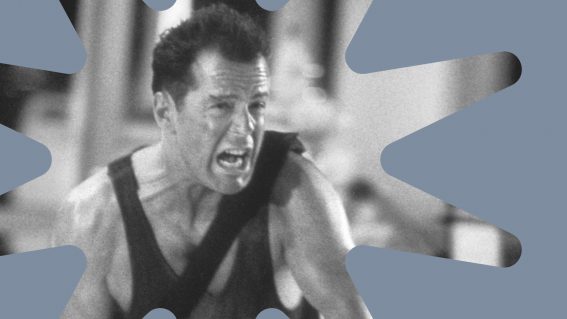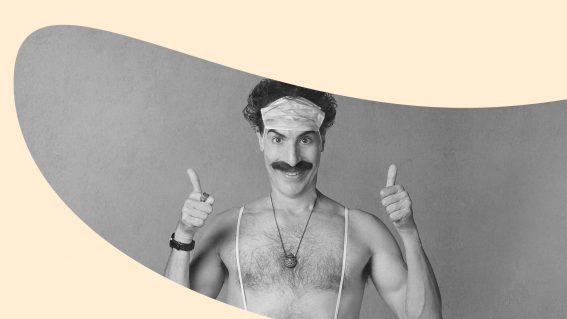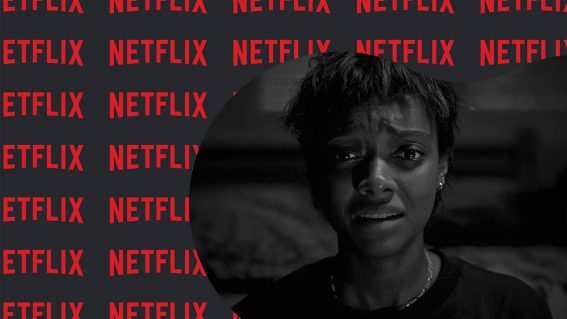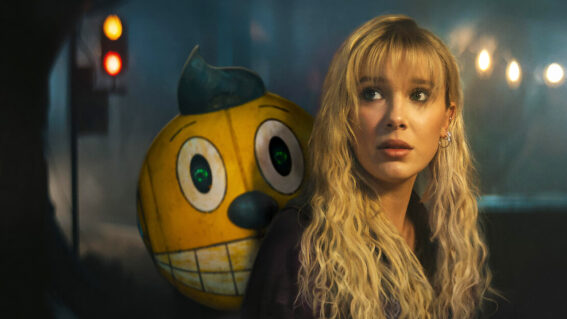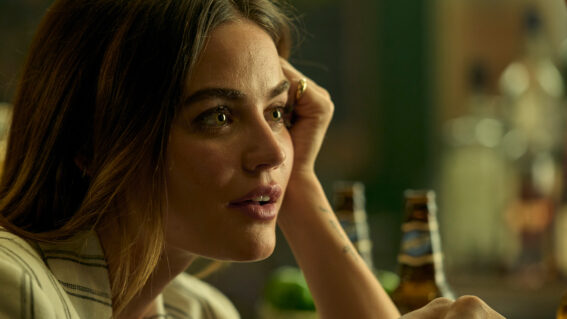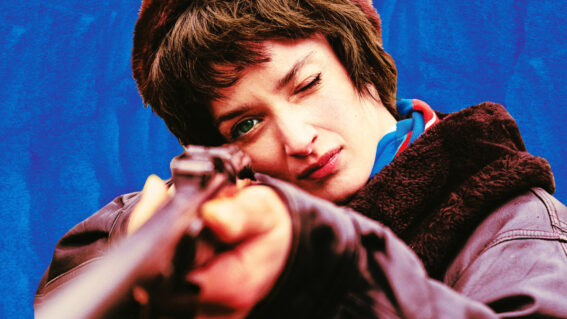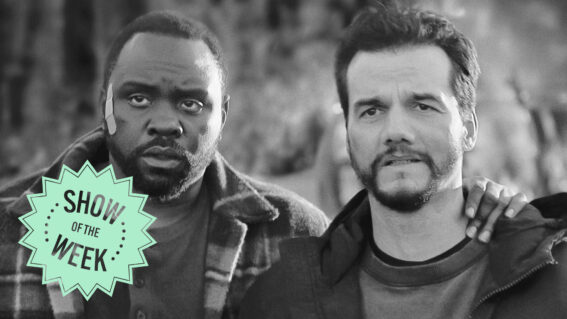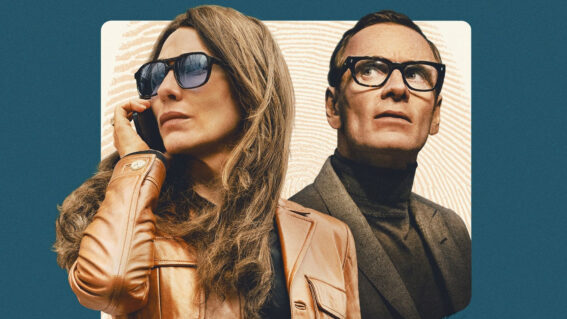The Boys in the Band brings a classic LGBT play to Netflix – but in 2020 we expect more than just a queer cast
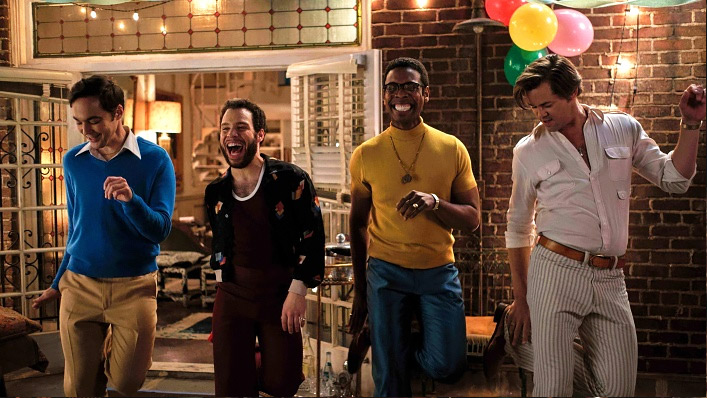
The Boys in the Band (now streaming on Netflix) brings a classic LGBT text to a modern audience. But as critic Glenn Dunks notes, its advances in diversity cannot cover up its fundamental flaws.
Mart Crowley’s play The Boys in the Band feels like one of those classic texts that’s ripe for new interpretations. After all, we are five decades removed from its original Off Broadway run as well as the 1970 film adaptation by none other than William Friedkin.
See also
* All new movies & series on Netflix Australia
* All new streaming movies & series
However, Netflix‘s new adaptation of the famously acidic show about a collection of gay male friends getting drunk and playing cruel emotional games with one another—think Who’s Afraid of Virginia Woolf in a Manhattan duplex—fails to do anything with the benefit of that time. Writer Ned Martel and director Joe Mantello offer little reason for this new version to exist beyond its admittedly admirable win for diversity in Hollywood casting, featuring an entirely out and open queer cast.
The Boys in the Band is a cultural touchstone
The Boys in the Band as a cultural touchstone is not necessarily a great one, but it is an interesting one. While the merits of the play and subsequent film have been debated by LGBTQ audiences for decades, it does exist as something of a rare bird: a classic, explicitly queer-themed text that has lingered in the zeitgeist from a time before both Stonewall in 1969 and the AIDS epidemic of the 1980s and ‘90s. This isn’t subtext, folks. It’s partly for these reasons that one can partially forgive many of its tendencies towards histrionic melodrama. And it’s impossible to deny the impact it had whatever our personal response to the material.
The story is very simple. A group of gay men assemble at the beautiful apartment of Michael (Jim Parsons), a man of style and refinement who wears his debt around his neck like a silk cravat. They are celebrating the birthday of Harold (Zachary Quinto), who gets more morose about his fading beauty with every passing year.
Among the guests are boyfriend Donald (Matt Bomer), a couple at loggerheads over their opposing thoughts on monogamy (Andrew Rannells and Tuc Watkins), flamboyant Emory (Robin de Jesus), bookish Bernard (Michael Benjamin Williams), Michael’s potentially closet-case ex college roommate (Brian Hutchinson) and a cowboy hustler-as-birthday-gift found on the streets of Times Square for $20 and a ham sandwich (Charlie Carver).
The play’s perspective doesn’t feel fresh or enlightening
Mantello, who also directed the 2018 Broadway revival, has chosen to not hide its stage origins, keeping Crowley’s famous words more or less entirely intact as well as its 1960s setting. This is probably the production’s first real mistake. While it would be silly for the show to be repurposed with a contemporary setting (maybe a beach house on Fire Island?), the play’s controversial take on homosexual self-loathing doesn’t feel fresh or enlightening. There is no reflection; no revision. It is as if 50 years have gone by without a single original thought about how to tell this story beyond including flashes of penis.
While this may prove bold for young audiences who won’t watch anything made before the pilot of Friends, it made me wonder what exactly made producer Ryan Murphy choose this as one of the earliest productions of his mega-bucks Netflix deal (others being Hollywood and Ratched). Particularly coming in the shadow of Pose, arguably his greatest creative achievement to date.
That series took its own historical time and place (the Harlem ball scene made famous by Paris is Burning and Madonna’s Vogue) and populated it with the very people it represented. It’s casting of transgender, non-binary and openly queer individuals of predominantly African American and Latinx heritage as well as being equally diverse off-screen helped make Pose one of the most electric series of the last several years. It appears the only lesson learned from it was its casting.
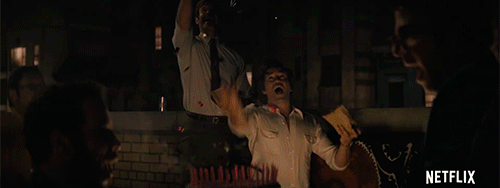
An all-gay primary cast is something to celebrate
While many may choose to divorce themselves from the politics of such things like on-screen diversity, the fact that all nine of the Boys here are portrayed by out gay actors is something to celebrate. The entire cast has transferred from the stage to the screen and its novel casting coup is surely a first for a feature film of this size and calibre. While it is a small step, it’s a deserved one that hopefully signals to other productions telling LGBTQ stories that they don’t always need to cast brave and transformative straight cis actors all the time.
For many queer audiences, there is a big difference between watching a straight actor portray a camp queen and a gay actor. It’s refreshing to see queer performers comfortably flittering between flamboyant, intimate and hysterical, while knowing that it is an extension of themselves rather than a gay act.
But for all of Mantello’s efforts to gussy his Boys up, it comes back to the script. Yes: there is an all-gay cast. And yes: the Netflix high-gloss sheen gorgeously spotlights the excessively over-decorated set (replete with ornate spiral staircase and so many antique lamps I lost count). But the hindsight of five decades has certainly done little to refine the original’s relationship to class and race. Nor has anybody on this production seemingly thought to attempt to do so themselves.
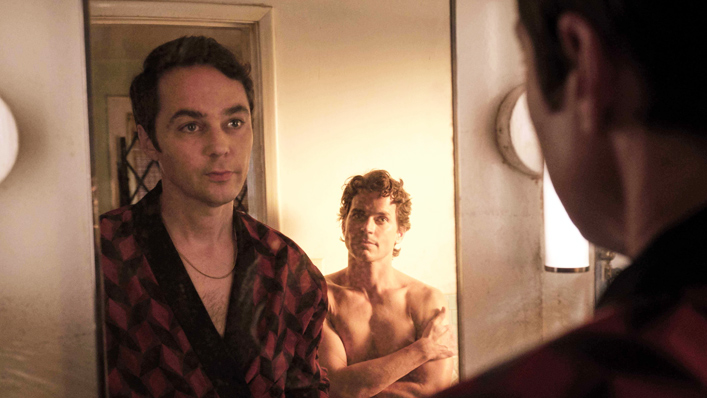
Characters gossip about promiscuity, bodies and fashion
The film works best in its opening half, when these boys come across as real friends who would sit around gossiping over cocktails while hissing barbs at themselves and each other about their promiscuity, their bodies, and their fashion. Lines lik, “there’s one thing to be said about masturbation, you have to look your best” roll off their forked tongues with glee. A dance sequence to Martha and the Vandellas’ Heatwave epitomises this ease, the actors clearly embracing the opportunity to be front and centre of such an iconic production. These passages have a familiarity to them that speaks to many gay friendship circles to this day.
In the second half, however, once the drinks have been downed and the jokes turn vicious, it becomes something far less pleasant and strains credibility. Even in 1968, it is impossible to imagine this mélange of men ever spending a single minute together. The snappy if usually vulgar wit of the first half (“Well, that’s the pot calling the kettle beige”) is replaced by suffocating miserable contempt. Entirely on purpose, of course, but that doesn’t make it good. The show’s reductive treatment of gay male angst feels even more out of place in 2020 than it did in 1970.
Ultimately it shares little with any of the exciting, exhilarating, exquisite queer cinema that audiences have to choose from today. Unfortunately for this Band, we expect more than just a queer cast in a queer story in 2020. What it achieves for on-screen representation is important, but as a film it struggles for relevancy.


